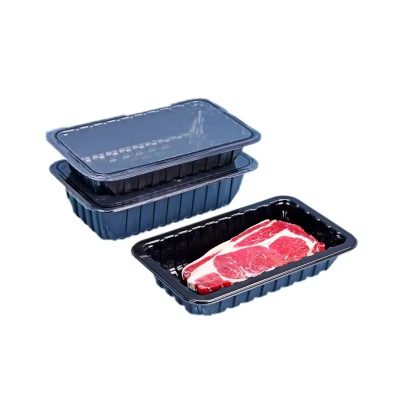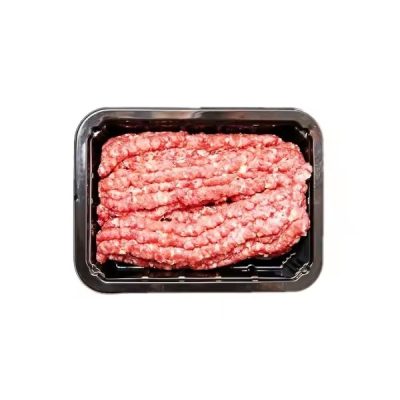Meat packaging stands as a cornerstone in the meat industry, safeguarding the quality, safety, and longevity of meat products throughout their journey from processing facilities to consumers’ homes. This article delves into the pivotal role of meat packaging, its essential components, benefits, design considerations, and the industry’s shift towards more sustainable practices.
Significance of Meat Packaging
Meat packaging serves as a protective shield, shielding meat products from contamination, physical damage, and degradation during transportation, storage, and display. Beyond preserving meat freshness, packaging ensures consumer safety by thwarting bacterial growth and extending the product’s shelf life, thus underpinning consumer satisfaction and market viability.
Key Components of Meat Packaging
Packaging Material: Diverse materials like various plastics (polyethylene, polypropylene), paperboard, and composite materials are employed. The choice hinges on meat type, desired shelf life, and storage conditions.
Sealing Mechanism: Airtight sealing mechanisms, such as vacuum sealing and modified atmosphere packaging (MAP), bar oxygen ingress, curbing spoilage and bacterial proliferation.
Labels and Branding: Labels furnish crucial information including meat type, weight, nutritional facts, expiration date, and handling instructions. Branding augments product differentiation and consumer engagement.
Benefits of Effective Meat Packaging
Extended Shelf Life: Innovations like MAP, which replaces air inside packaging with a gas mixture, impede microbial growth and oxidation, thus prolonging shelf life.
Safety and Hygiene: Rigorous packaging safeguards against external contaminants, ensuring meat integrity and consumer safety. Vacuum packaging mitigates bacterial proliferation by removing air.
Consumer Convenience: Intuitive packaging designs featuring easy-open features and resealable options enhance consumer convenience and diminish food waste.
Brand Differentiation: Premium packaging, coupled with clear labeling and compelling branding, aids in product distinction, fostering brand loyalty and driving sales.
Design Considerations
Material Selection: Opting for materials boasting robust barrier properties against oxygen, moisture, and contaminants. The surge in demand for sustainable materials echoes consumers’ environmental concerns.
Packaging Technology: Embracing cutting-edge technologies like MAP and active packaging to sustain meat freshness and safety, while minimizing environmental impact.
Ergonomics and Functionality: Designing packaging that’s user-friendly, facilitating easy handling, opening, and resealing, thus enhancing consumer experience and reducing waste.
Sustainability: Embracing recyclable or biodegradable materials, and adopting packaging designs that curtail waste production, aligning with consumer preferences for eco-friendly options.
Trends in Meat Packaging
Sustainable Packaging: The surge in biodegradable and recyclable materials, such as compostable films and recycled plastics, signifies a push towards environmental stewardship.
Smart Packaging: Integration of technology, like time-temperature indicators and freshness sensors, furnishing real-time insights into product condition, bolstering consumer trust.
Enhanced Shelf Life Technologies: Adoption of advanced technologies, such as MAP and vacuum packaging, to protract shelf life and uphold meat quality.
Minimalistic and Transparent Packaging: Embracing minimalist designs and transparent packaging to bolster product visibility, engendering consumer trust and appeal.
Conclusion
In summary, meat packaging serves as a linchpin in ensuring the quality, safety, and longevity of meat products. The judicious selection of materials and packaging techniques underscores the preservation and desirability of meat, adhering to stringent safety standards prevalent in the food industry. With an eye towards the future, the industry is veering towards sustainable and innovative packaging solutions that not only meet consumer demands but also champion environmental conservation. By prioritizing protection, convenience, and sustainability, meat packaging continues to evolve, leaving an indelible mark on the modern marketplace.







